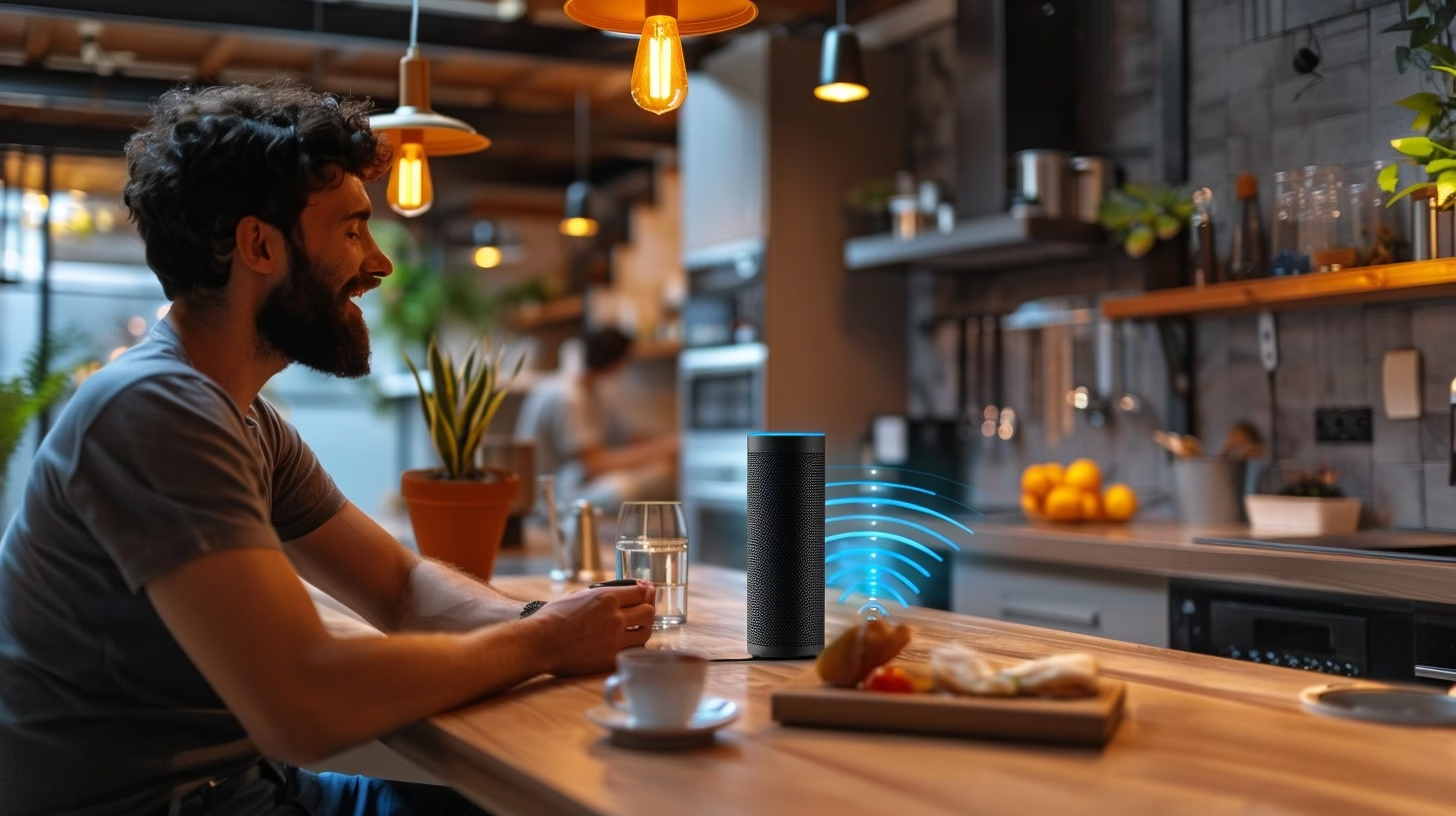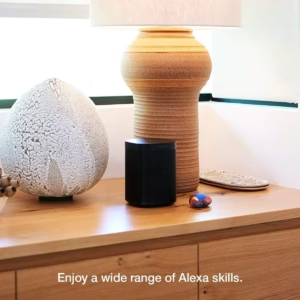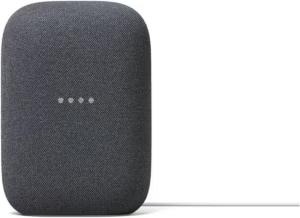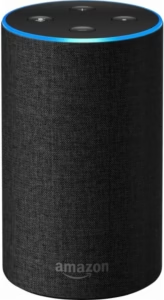Introduction
Home users are now changing their interactions through voice control methods.Users can function their devices using easy to remember spoken commands through this system.The simplest way to manage home operations now exists through smart assistants that include Google Assistant and Alexa and Siri.
The implementation of voice control systems
The function of voice control results in improved smart home usability because users do not need buttons or mobile applications to control devices.
People need only to speak commands through their voice to control various devices.People enjoy increased efficiency through this system which also simplifies their daily lives.
Control Devices with Your Voice
The capability to control lights using voice commands enables users to activate illumination by voice and modify brightness levels as well as color temperature through voice commands.
Voice commands enable instant control of the living room lights without any need for movement from your seat or use of remote controls.
Easier Temperature Adjustment
Temperature settings do not require manual changes because voice commands enable you to pick the ideal room temperature.Commanding the house system to set the temperature at 22 degrees automatically creates the desired comfort level.
Improved Home Security
Voice control systems contribute to maintaining the security of homes.A few voice instructions allow you to lock doors and view security cameras alongside activating indoor alarms.Home security can be achieved by saying “Lock the front door” so that no keys are necessary for protection.
Hands-Free Entertainment
All commands needed to play music while watching movies or listening to news content are easily manageable through voice operation.Anyone can play their favorite songs by giving the voice command “Play my favorite song” without needing to operate a remote or open apps.
Better Accessibility for Everyone
The voice control system delivers maximum utility to children along with seniors and users who have disabilities and physical restrictions. Smart home technology grows accessible and easier to use because users do not need to employ their hands.
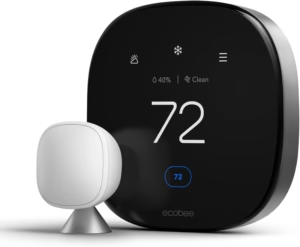
Benefits of Using Voice-Controlled Smart Devices
People benefit from voice-controlled smart devices because these devices enable them to operate their homes with basic voice instructions.The devices provide their users with multiple advantages of convenience combined with better security while also conserving energy.
Convenience
You can run commands to devices through your voice to avoid manual objections.The lights can be turned off while the fan operates and music plays without requiring you to reach for switches or remote controls.All you need to do to activate the bedroom light off operation is give the command “Turn off the bedroom light.”
Helps People with Mobility Issues
Voice-controlled devices present tremendous benefits to those people who experience movement difficulties.Voice commands enable disabled users and elderly people to operate appliances through their voices regardless of whether they are standing up.A person confined to a wheelchair can quickly state “Open the curtains” instead of straining with manual operation.
Saves Time and Effort
These technology-based systems rapidly finish tasks which speeds up routine activities.You can issue verbal instructions from your current position instead of moving across the room to operate the thermostat or turn off lights.Smart commands wholeheartedly benefit individuals who need to conserve their resources due to various circumstances.
Reduces Energy Use
Users can save energy through their voice-controlled smart devices which modify system settings automatically.Users can decrease thermostat settings by two degrees and switch off the entire lighting system at a command.The voice commands lead to minimized power consumption which in turn results in lower electricity costs.
Better Home Security
Through voice commands people can handle their security devices encompassing smart locks combined with smart cameras.
Through voice command you can instruct your system to lock the main entrance while also requesting camera footage from the backyard area. The system enables fast management of security needs.
Different fundamental technologies underpin voice recognition operations in smart homes
Users can operate smart home systems by giving verbal instructions through the technologies that smart homes utilize for voice recognition. Various advanced technologies serve to ensure both the correct functioning and fast performance of the system.
The systems operate with four key technologies named Automatic Speech Recognition (ASR), Natural Language Processing (NLP), Machine Learning and Cloud Computing.
Automatic Speech Recognition (ASR)
The initial component of voice recognition belongs to Automatic Speech Recognition. The system obtains spoken words through its auditory abilities while creating written transcription from these words.
The spoken command “Turn off the fan” undergoes text transformation by ASR to make the system comprehend it. ASR technology allows smart devices to interpret spoken voice commands therefore its absence makes devices unable to respond to voice commands.
Natural Language Processing (NLP)
The system requires understanding of written text after it receives speech conversion results. The process of command understanding by smart devices becomes possible through NLP technology which divides input words into sections then determines their intended purposes. During an instruction of “Dim the living room lights” NLP processes this request to decrease room brightness.
Machine Learning
The functionality of voice recognition improves gradually through processing by machine learning systems. The technology enables smart home systems to master previous encounters and achieve better accuracy in their operations.
Your voice assistant develops an understanding of relaxing music preferences because you told it to play relaxation music often so it presents related music choices later on. Your voice assistant evolves into better recognition of your preferences through your continuous use of voice commands.
Cloud Computing
The majority of voice recognition systems transmit commands through cloud computing to achieve quick processing. Data from smart assistants gets forwarded to cloud-based powerful computers which perform the actual processing tasks.
The installed computers process this data to generate appropriate replies that return in mere seconds. Voice recognition accelerates as well as becomes more dependable through this method.
Through which mechanisms do voice-operated devices establish communication with various smart home control systems?
Voice-controlled devices provide communication through various smart home systems which enhances user convenience.These devices require wireless connection through Wi-Fi as well as Bluetooth and Zigbee and Z-Wave for command transmission.The wireless network connections enable smart devices to operate efficiently with each other.
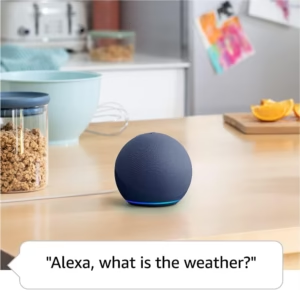
The Role of the Voice Assistant
A voice assistant, like Alexa, Google Assistant, or Siri, acts as the main control center. Your voice command interprets by the assistant followed by sending device commands to the appropriate smart devices.The voice assistant will deliver the instruction to your smart lighting system when you ask it to “Turn off the bedroom lights.”
Wireless Connections
The majority of smart devices link with each other via wireless communication.Enter internet communication through Wi-Fi networks which many smart home devices apply for command transmission.You can control your devices either through your voice commands or smartphone app because of this wireless accessibility.
Some devices that include smart speakers and door locks operate through Bluetooth for short-range wireless communication.Wireless device communication works efficiently when they are situated near each other.
The smart home technology network includes Zigbee along with Z-Wave as specialized wireless protocols.Smart devices can operate independently by creating wireless connections without requiring any Internet connection.
Local Networks for Better Speed and Privacy
The operation of particular smart home platforms depends on using local networks instead of conventional internet connectivity. The devices establish their own direct communication pathways that eliminate the need for online data transfer.
The system delivers quicker services and protects sensitive information better by working without the internet. Voice Control faces safety risks so potential hackers could compromise security as well as privacy breaches. The convenience of voice control during daily activities forms an opportunity that exposes systems to potential risks.
Weak security at smart home systems makes them exposed to hacker intrusion attempts. Security issues may arise from devices that have the capability to record conversations because it violates user privacy. Users need to take specific measures to safeguard their information for better safety.
Best Voice-Controlled Smart Home Devices
| Company | Model | Specifications | Price |
| Amazon | Echo (4th Gen) | – Voice Assistant: Alexa – Audio: 3.0″ woofer and dual front-firing 0.8″ tweeters – Connectivity: Wi-Fi, Bluetooth – Smart Home Hub: Built-in Zigbee hub |
$99.99 |
| Echo Dot (5th Gen) | – Voice Assistant: Alexa – Audio: 1.73″ front-firing speaker – Connectivity: Wi-Fi, Bluetooth – Size: Compact design |
$49.99 | |
| Echo Studio | – Voice Assistant: Alexa – Audio: 5 speakers for immersive sound – Connectivity: Wi-Fi, Bluetooth – Smart Home Hub: Built-in Zigbee hub |
$199.99 | |
| Nest Hub (2nd Gen) | – Voice Assistant: Google Assistant – Display: 7″ touchscreen – Connectivity: Wi-Fi, Bluetooth – Features: Sleep tracking, smart home control |
$99.99 | |
| Nest Audio | – Voice Assistant: Google Assistant – Audio: 75mm woofer and 19mm tweeter – Connectivity: Wi-Fi, Bluetooth – Design: Fabric-covered exterior |
$99.99 | |
| Apple | HomePod mini | – Voice Assistant: Siri – Audio: Full-range driver and dual passive radiators – Connectivity: Wi-Fi, Bluetooth, Thread – Features: Intercom, stereo pairing |
$99.00 |
| Sonos | One (Gen 2) | – Voice Assistant: Alexa and Google Assistant – Audio: Class-D amplifiers and custom-built drivers – Connectivity: Wi-Fi, AirPlay 2 – Features: Humidity resistant |
$219.00 |
| Era 100 | – Voice Assistant: Alexa – Audio: Next-gen acoustics with custom waveguides – Connectivity: Wi-Fi 6, Bluetooth – Features: Trueplay tuning technology |
$249.00 | |
| Ecobee | SmartThermostat with Voice Control | – Voice Assistant: Alexa built-in – Display: Touchscreen – Connectivity: Wi-Fi, Bluetooth – Features: Occupancy sensor, music streaming |
$249.99 |
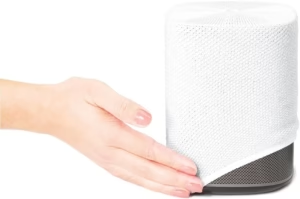
What are the defense mechanisms available to users who maintain data privacy while operating voice-controlled devices?
Change Default Passwords
The standard factory-set passwords provided with intelligent devices prove effortlessly accessible because they are basic and uncomplicated.All users need to establish multiple complex passwords that prevent unauthorized intruders from entering their systems.
Remove always-listening mode whenever not essential
A few voice assistance’s maintain continuous active listening for upcoming commands.The reduction of unintended recordings becomes possible when users disable the feature when it is not required.
Use Two-Factor Authentication
An additional security measure comes from using two-factor authentication.When criminals succeed in guessing passwords users must perform a second security check for example a phone code before gaining access.
Check Privacy Settings Regularly
People who manage their privacy settings on mobile devices need to verify that their data disclosure does not exceed acceptable boundaries.Users have the capability to remove voice recordings that their smart assistants store.
Limit Third-Party App Access
Some mobile applications linked to voice assistant services frequently ask users to grant excessive access permissions to their personal details.Users need to approve only the trusted applications they wish to keep and uninstall everything else that is unnecessary.
Voice Assistants demonstrate the ability to manage most of the available smart home technologies.The popular voice assistants Alexa and Google Assistant and Siri enable commands that manage numerous smart home devices yet they cannot command every available smart device.
The compatibility and brand together with the technological requirements determine which voice assistance devices function together.
Compatibility Matters
Smart home devices normally function with particular voice assistant platforms. The Amazon Echo provides simple control of particular smart lights whereas those same lights remain incompatible with Apple’s Siri.
Users need to verify smart device compatibility with their voice assistant system before making any purchases.
The Need for Hubs and Integrations
Devices exist which require an intermediary connection to functionality with voice assistants.These devices must connect through a smart home hub as well as a separate integration to operate.
Devices that operate using Zigbee and Z-Wave technology need an additional hub to establish communication links with Alexa or Google Assistant services.The voice assistant cannot handle these devices unless it connects properly with the required hub.
Checking Before Buying
Before purchasing smart devices users need to verify their chosen voice assistant’s support for that device.The product descriptions normally list the voice assistant compatibility features.When a device does not receive support from a particular platform users might need additional applications combined with control hubs to enable operation.
Voice Control presents typical problems which users can resolve through these fixesVoice control systems provide convenient management of smart homes yet their actual execution can have unexpected results sometimes.
Voice-command systems can generate three main usability problems which include non-responsive smart device functionality along with degraded voice reception and staggered response times.Most of the encountered problems have straightforward fixes.
Device Not Responding
The voice assistant occasionally fails to register verbal directives.Internet connection weakness together with microphone malfunction can prevent the system from working correctly.
How to Fix It:
Test the internet connection stability before proceeding. Users should restart their Wi-Fi router when experiencing network related problems.
Verify that the device microphone remains active while preventing any possible blockages. Users should attempt to restart the voice assistant system while they continue their efforts.
Misunderstood Commands
The voice assistant struggles to recognize spoken commands occasionally. Carrying out wrong responses and failing to act become possible outcomes under these circumstances.
How to Fix It:
Speak slowly and clearly. Rephrase the command by using different verbalization when attempting again. Users should verify whether the voice assistant platform accepts the used command.
Slow Response
The system could require time to respond because of network congestion or software problems.
How to Fix It:
System refreshing can be achieved by restarting the device. Other devices should be disconnected from the Wi-Fi network because this will enhance the network speed. Users should perform software updates on voice assistants to maintain their operational excellence.
Incompatibility Issues
Smart home appliances fail to work with voice commands if their software does not support interoperability with the voice assistant.
How to Fix It:
Confirm whether the device requires a smart home hub as a function requirement. Check for available updates of the device software through the latest version release. Search for adaptation platforms that could make such devices compatible.
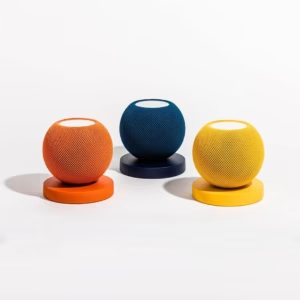
The Role of AI in Voice Control
The combination of Artificial Intelligence enables voice control to become smarter. Through AI processors devices master user behaviors and they gain speed at command execution while their performance rises.
Better technology innovations will result in improved automated systems and customized functions. Smart homes will continue to develop because of voice control technology. The system provides users with combined advantages including simple access and operational speed.
Teams that implement proper safety protocols can make voice control a secure feature which brings value to homes throughout the nation.
You can Contact Us for any question regarding this article.
Frequently Asked Questions
What is voice control? Voice control represents a technology framework that enables users to control their devices through spoken verbal order.
The process of voice control involves what system? The system understands spoken requests through speech recognition before taking appropriate actions.
Which devices from the product range enable voice command compatibility? Voice control systems include smartphones, smart speakers, TVs, thermostats, lights, security systems and additional devices.
Which major voice assistant systems exist as popular examples in the market today? The four major voice assistant systems include Alexa together with Google Assistant and Siri accompanied by Bixby.
Do voice control functions properly when there is no internet connection available? The system allows you to execute basic commands without internet but the majority of functions need an online connection.
Is voice control secure? Voice control provides quick access but users should take safety measures for privacy protection by setting strong security protocols.
Can the system identify different voices as separate users? Voice assistants currently possess the capability to understand multiple voices thus they deliver custom responses to individual users.
The process of improving voice recognition entails which steps? The assistant needs clear speech and minimal background noise to function properly. Additionally users need to teach the system their voices through voice profiles.
Is voice control accessible through different linguistic choices? Most voice assistant programs enable support of various languages together with recognizing multiple regional speech patterns.
Users can control which intelligent home devices through their voice commands? Voice commands allow users to control their smart lights together with locks and thermostats as well as cameras and home appliances.
Does voice control have availability on smart televisions? Smart TVs in current production have built-in voice command functionality that lets users navigate their menus.
Through voice commands does my vehicle become operable? The modern automotive sector delivers vehicles equipped with hands-free voice assistant systems.
Do voice control functions as an application that works with smart home hubs? Voice assistants fulfill their functionality through Amazon Echo and Google Nest smart hubs.
Does voice control enables users to send messages through their system? Voice commands allow you to perform textual and email messaging in addition to placing telephone conversations.
Does voice control provides assistance to users requiring accessibility functions? Voice control enables hands-free operation to benefit people who need accessibility through disabilities.
Which step enables voice control deactivation? The microphone functions of smart speakers can be muted through device settings or users have the option to disable voice control through device settings.
Can users produce their personal voice commands through these systems? Users on particular platforms possess the ability to construct automated routines along with personal command syntax.
The reliability of voice commands operates under what conditions when environmental noise becomes a factor? Noise impedes its performance yet advanced microphones combined with AI system enhance its accuracy level.
Is there a possibility to use vocal commands for online shopping? Users can search and order online products through numerous voice assistants available in the market.
Will voice control systems continue to develop into what future looks like? AI research will drive improvements in the natural operation of voice control as well as widespread compatibility of voice systems.

